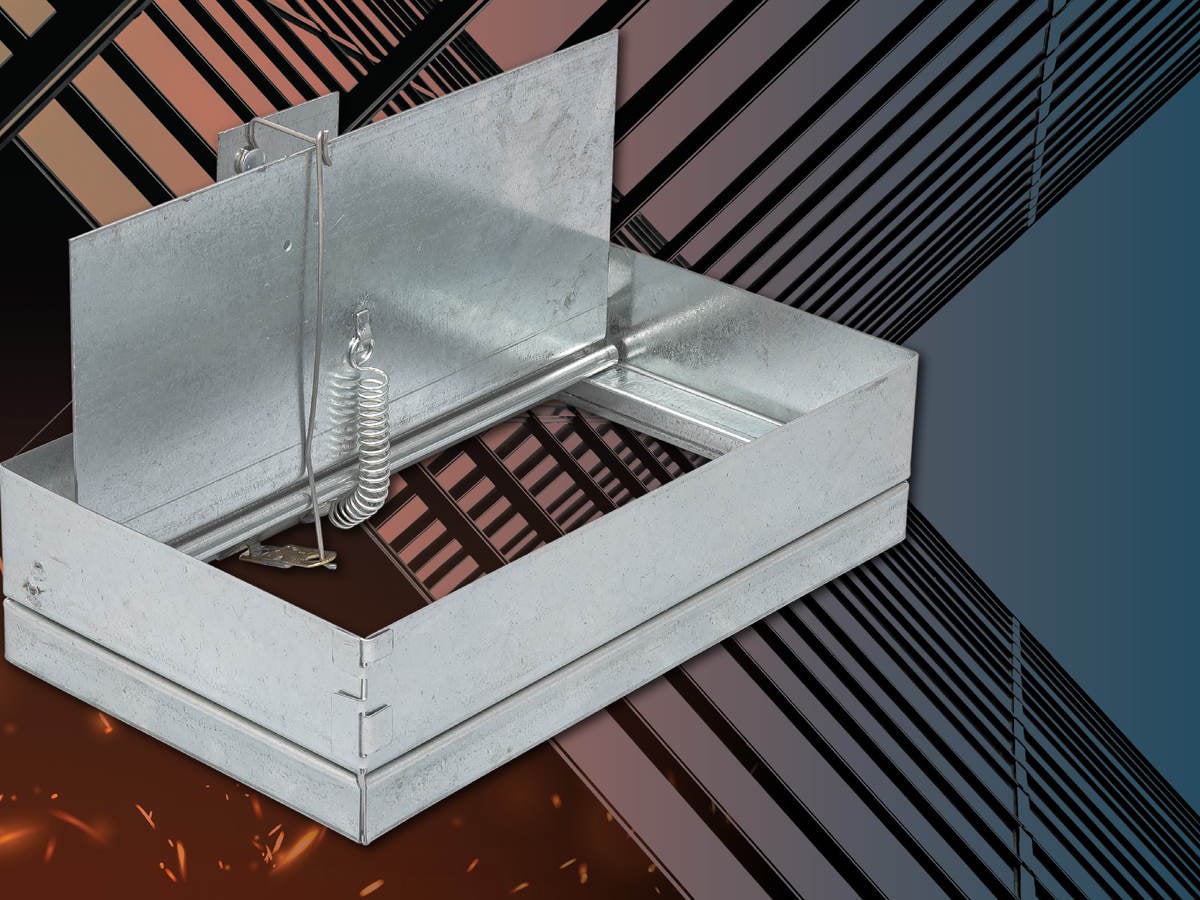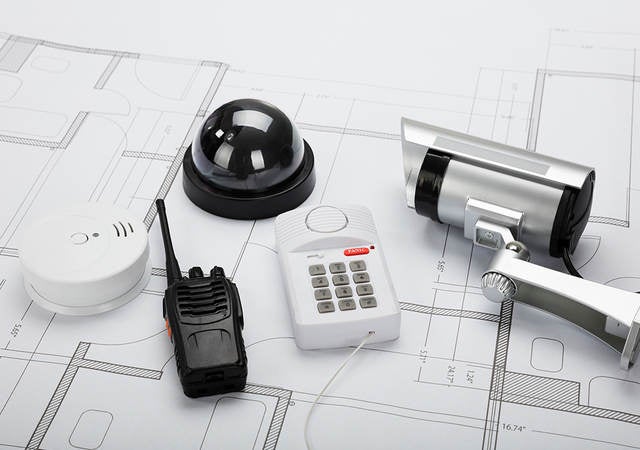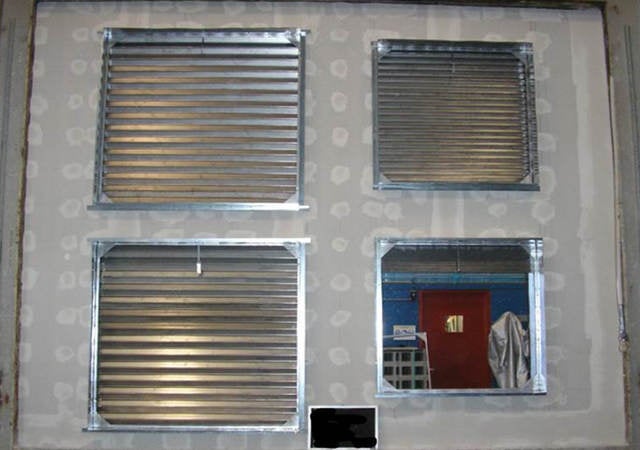July 6, 2021
By Dave Stammen, principal engineer – Building Envelope and Aldo Jimenez, laboratory leader
UL has recently updated its damper marking and application guide for use by code authorities, architects, engineers, contractors, installers and other interested parties. This guide is intended to aid in understanding the types of dampers available in the market, in association with the applicable codes and standards to facilitate code-compliant installations.
Fire and smoke protection features are addressed within the U.S. building codes to safeguard the public as well as first responders during emergency operations. Fire, smoke, combination fire/smoke, ceiling radiation and corridor dampers are investigated in accordance with UL 555, the Standard for Safety of Fire Dampers, UL 555S, the Standard for Safety of Smoke Dampers, and UL 555C, the Standard for Safety of Ceiling Dampers, and are intended to be installed in accordance the following model codes:
- International Building Code, Section 717
- International Fire Code, Section 717
- International Mechanical Code, Section 607
- International Property Maintenance Code, Section 703
- NFPA 90A Standard for the Installation of Air-Conditioning and Ventilating Systems, Section 5
- NFPA 1 Fire Code, Section 12
- NFPA 101 Life Safety Code, Section 8
- NFPA 5000 Building Construction and Safety Code, Section 8
- Uniform Mechanical Code, Section 606
These model codes specify the locations in which damper products are to be installed, ratings required for each installation, standards with which the products must comply, related installation requirements, and other details.
Fire protection
Passive fire protection is an integral part of the overall safety approach included within model building codes. One approach to passive fire protection involves limiting the movement of fire and associated smoke and toxic gases throughout a building through compartmentation, as shown in Figure 1. Dampers are an element of this passive protection and are used to protect openings for heating, ventilation and air conditioning (HVAC) ducts through rated assemblies. These assemblies include fire, smoke, combination fire/smoke, ceiling radiation and corridor dampers.
As the industry continues to produce and develop these safety devices, UL has the technical expertise to certify all five of these types of dampers in accordance with the requirements of various codes. Proper inspection and maintenance – as required by the codes – will help ensure that the dampers continue to function properly and provide fire compartmentation when needed.

UL’s certification and compliance label
Model codes require dampers used to protect opening or penetrations in fire resistance-rated assemblies to be “listed.” To comply with code requirements, UL Certified (Listed) dampers are marked with the appropriate ratings and features based on the application for which the damper has been evaluated. UL also offers an Enhanced and Smart UL Mark system that uses custom-built, modular artwork to make each Mark unique for a UL Certified product. The unique identifier aids with traceability and provides more information about a product’s certification. The smart version of the enhanced Mark or badge uses a QR code that is embedded in each. When scanned using a smart device, the QR code links a user to additional information regarding the certification.
Marking and application guide
To assist in navigating the UL markings, we have developed the UL Dampers for Fire and Smoke Protection Marking and Application Guide This guide provides important application information to code and inspection authorities, architects, engineers, contractors, installers and other interested parties on limiting the spread of fire, smoke and toxic gases by protecting duct penetrations and air-handling openings in fire and smoke rated assemblies.
More specifically, the UL Dampers for Fire and Smoke Protection Marking and Application Guide provides details regarding the following topics:
- Damper types · Alternate types of protection for duct outlets
- Damper related product categories
- Damper codes and standards
- Installation considerations
- Dampers in horizontal assemblies
- Installation instructions
- Mullions
- Damper actuators
- Detectors and smoke dampers
- Airflow ratings
- Inspection, testing and maintenance
- Damper selection and installation
- UL Mark considerations
Inspection and maintenance
To protect lives and property, mechanical devices such as dampers must operate properly. Routine inspections and regular maintenance in accordance with the damper manufacturer recommendations and code requirements are critical. As addressed in Section 717.4 of the 2018 International Building Code (IBC), fire and smoke dampers “… shall be provided with an approved means of access that is large enough to permit inspection and maintenance of the damper and its operating parts.” Also, Chapter 7 of the International Fire Code (IFC) requires that inspection and maintenance be in accordance with the following standards:
- Fire dampers: NFPA 80, Standard for Fire Doors and Other Opening Protectives
- Smoke dampers: NFPA 105, Standard for Smoke Door Assemblies and Other Opening Protectives
- Combination fire/smoke dampers: Must meet requirements contained within NFPA 80 as well as NFPA 105
Chapter 19 of NFPA 80 and Chapter 7 of NFPA 105 detail the requirements for installing, testing and maintaining fire dampers and combination fire/smoke dampers. NFPA 80 requires dampers to be tested and inspected one year after acceptance testing. Additional testing and inspection is required every six years for dampers in a hospital, and every four years for all other building occupancy types.
These NFPA standards have a new section in the 2019 editions now requiring that a manufacturer’s installation and maintenance instructions be maintained on site for new damper installations. Also included in the 2019 editions is a new allowance for remote inspections to occur using the following criteria:
- Dampers must have the capability to indicate fully open and fully closed.
- Initial remote inspection must include a visual inspection to confirm the fully open/fully closed positions.
Dampers should undergo periodic maintenance. Several factors to consider when determining the level of maintenance include the product manufacturer’s and system designer’s recommendations, code requirements and the complexity of the system in which the damper is installed. Maintenance activities should be documented, and the documentation of the activities retained on site. Maintenance should include:
- Removal of debris buildup from the damper and surrounding area
- Manual cycling of dampers released by fusible links
- Lubrication of moving parts according to manufacturer instructions
- Cycling of damper and actuator assemblies
Compliance with building codes delivers safety for the public and emergency responders during an emergency event in a building or structure. Compartmentation within a building design to limit the movement of fire and smoke will continue to rely on the use of life safety dampers. Damper inspections and maintenance will help ensure proper performance when needed.
UL’s certification program for dampers evaluates product to applicable standards and code requirements. Products which have successfully completed this evaluation are eligible to bear the UL certification mark.
The damper marking and application guide provides information for the correct selection and installation of dampers as appropriate for specific applications and code compliance. The Enhanced and Smart UL Certification Mark and badge system delivers greater clarity and helps drive acceptance in the market by responding to changing marketplace needs and the evolving nature of certification. Information about UL Certified dampers can be accessed using the complimentary UL Product iQ™ application at www.ul.com/productiq, then searching for dampers. Fire, smoke, combination fire/smoke and corridor damper certifications are located within the category Dampers for Fire Barrier and Smoke Applications (category code EMME); ceiling radiation dampers are located in category Ceiling Dampers (category code CABS).
Contact us to learn more about product testing and certifications for life safety devices.
The Code Authority Newsletter 2021 | Issue 2
Get connected with our sales team
Thanks for your interest in our products and services. Let's collect some information so we can connect you with the right person.



